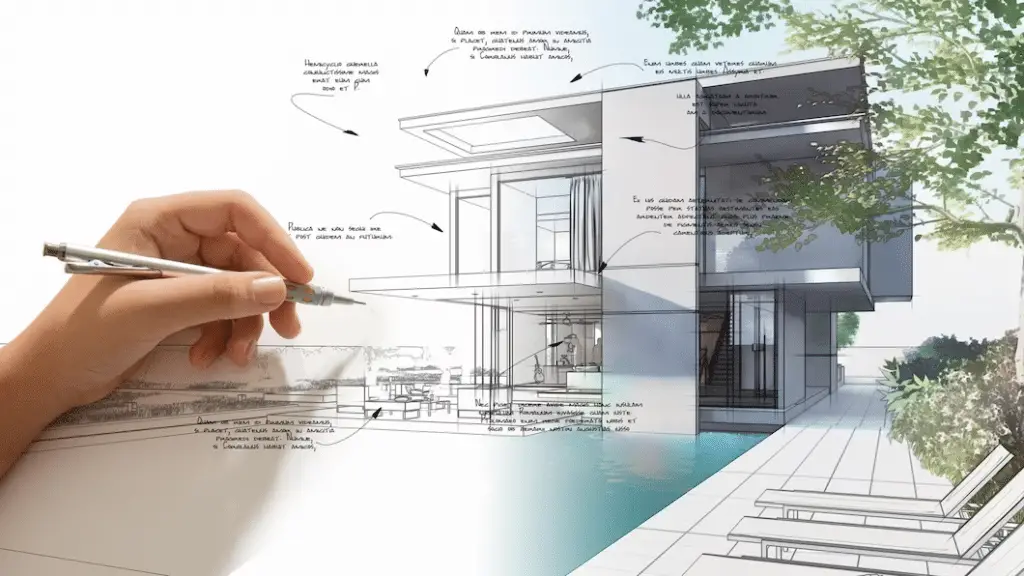How Much Do Architectural Designers Make
Introduction
How Much Do Architectural Designers Make: Architectural design is a field that combines creativity, technical knowledge, and problem-solving skills to create functional and aesthetically pleasing structures. Architectural designers play a crucial role in the design and construction process, working closely with clients, engineers, and other professionals to bring architectural visions to life. As with any profession, one of the key considerations for aspiring architectural designers is the earning potential in the field.
Determining the exact salary range for architectural designers can be complex, as it is influenced by various factors such as experience, location, education, and the size and reputation of the firm. In general, architectural designers earn a competitive salary commensurate with their skills and experience. Entry-level positions may have lower salaries, but as designers gain more experience and build a strong portfolio, their earning potential increases. Architectural designers who specialize in certain areas, such as sustainable design or healthcare facilities, may also command higher salaries due to their expertise in niche markets.
Geographical location plays a significant role in determining salary levels for architectural designers. Metropolitan areas and regions with a high demand for architectural services tend to offer higher salaries compared to rural or less populated areas. Additionally, working for larger firms or established architectural practices often leads to higher compensation due to the firm’s reputation and project complexity.

What Is The Highest Paid Architecture Job?
Top 10 Highest Paying Architect Careers
- 1) Landscape Architect.
- 2) Architectural Technologist.
- 3) Architectural Designer.
- 4) Preservation Architect.
- 5) Green Building & Retrofit Architect.
- 6) Commercial Architect.
- 7) Industrial Architect.
- 8) Architecture Manager.
- 9) Senior Architect.
- 10) Extreme Architect.
The field of architecture offers a wide range of career opportunities, each with its own set of rewards and challenges. Senior partners or principals at top architecture firms earn the most in the business.
As senior partners or principals, architects lead and manage the firm’s projects, oversee design concepts, and complete large-scale projects. These professionals are valuable to their firms due to their experience, design talents, and industry knowledge.
The high salary associated with this position reflects the level of responsibility, expertise, and leadership required. Senior partners or principals frequently attend client meetings, idea development, construction supervision, and project delivery. Their strategic decision-making and ability to navigate complex architectural challenges contribute to the success and reputation of their firm. The compensation for senior partners or principals varies widely depending on factors such as the firm’s size, location, and reputation.
What Does An Architectural Designer Do?
Architectural Designers plan and design the layouts for buildings and landscapes. They work under the direct supervision of licensed Architects and interact with clients to gather design requirements, specifications, and budgets for their building projects.
Architectural designers create unique and functional building designs. They are responsible for transforming conceptual ideas into tangible architectural plans, ensuring that structures meet aesthetic, functional, and safety requirements. Architectural designers endeavor to create well-designed, attractive, and sustainable buildings.
Architectural designers must work with customers and stakeholders to understand their needs. They conduct meetings, discussions, and site visits to gather information about project requirements, budget constraints, and any specific design considerations. Based on these inputs, the designer develops design concepts and presents them to clients for feedback and approval.
Once the design concept is approved, the architectural designer starts creating detailed architectural drawings and plans.Floor plans, elevations, sections, & 3D models are drawn using CAD software and other digital tools. These drawings serve as a blueprint for construction, guiding contractors, engineers, and other professionals involved in the building process.
What Is Difference Between Architect And Architectural Designer?
Whereas an architect is a licensed design professional, an architectural designer is not. An architectural designer is one step below an architect when it comes to expertise. Before an architect passes the ARE’s and gets licensed, she is an architectural designer.
“Architect” & “architectural designer” are commonly used interchangeably, however their duties and credentials differ in architecture.
An architect is a licensed professional who has completed a formal education, practical training, and passed a licensing examination. They are legally authorized to practice architecture and have a broad range of responsibilities. Architects have a comprehensive understanding of the technical, legal, and regulatory aspects of building design and construction. They can manage the full architectural process, from design to project management & construction.
Initial client meetings, site study, programming, schematic design, design development, construction documentation, & construction supervision are common tasks for architects. They comprehend building systems, structural issues, building rules, and zoning laws. Project management, contract administration, and collaboration with engineers, contractors, and interior designers are also part of architects’ training.
On the other hand, an architectural designer refers to a professional who is involved in the design aspect of architecture. Architectural designers are trained in architectural design & drafting but are not professional architects. They work closely with architects and assist in the creation of architectural drawings, plans, and 3D models.
What Are The Benefits Of Being An Architectural Designer?
Pros of Being a Licensed Architect
- Increased salary potential.
- Technical skills to make you more hirable.
- Increased opportunities for leadership.
- An opportunity for to do creative work.
- Positively impact the world around you.
- Professional liability.
- Commitment to education.
- Hard work and long hours.
Being an architectural designer comes with a range of benefits, making it an appealing career choice for those with a passion for design, creativity, and the built environment. Here are some of the advantages of being an architectural designer:
Creative Outlet: Architectural design allows for self-expression and creativity. As an architectural designer, you have the opportunity to transform ideas into tangible designs, bringing beauty and functionality to the built environment. It is a field that constantly challenges you to think innovatively and develop unique solutions to design problems.
Variety of Projects: Architectural designers have the opportunity to work on a diverse range of projects. From residential buildings and commercial spaces to cultural institutions and urban planning, the field offers exposure to various sectors and project types. This variety keeps the work engaging and allows designers to continuously learn and expand their skills.
Collaboration and Teamwork: Architectural design is a collaborative process that involves working closely with clients, architects, engineers, and other professionals. This collaborative environment fosters teamwork and provides an opportunity to learn from and contribute to a multidisciplinary team. The ability to collaborate effectively is essential for successful project delivery.
Impact on the Built Environment: Architectural designers have the power to shape the physical world around us. By creating well-designed and sustainable buildings, they contribute to the improvement of communities and the quality of life for individuals. Their work can have a lasting impact on the environment, social dynamics, and cultural experiences.
What Is The Highest Pay For Architectural Designers?
Our data indicates that the highest pay for an Architectural Designer is ₹1m / year.
Experience, location, business size, and reputation affect architectural designers’ salaries. Professional architectural designers can earn high wages.
In general, the salary range for architectural designers is broad. Entry-level or junior designers typically earn salaries that are lower compared to their more experienced counterparts. As designers gain more experience and develop a strong portfolio, their earning potential tends to increase.
The highest-paid architectural designers often work for prestigious architectural firms in major cities or architectural hubs around the world. These firms may work on landmark buildings, large-scale developments, and exclusive residential homes worldwide. These high-value projects can boost the earnings of designers working with such organizations.

How Much Does An Architectural Designer Make?
As of Jul 3, 2023, the average hourly pay for an Architectural Designer in the United States is $35.07 an hour.
While ZipRecruiter is seeing hourly wages as high as $51.68 and as low as $16.83, the majority of Architectural Designer wages currently range between $28.85 (25th percentile) to $40.14 (75th percentile) across the United States. The average pay range for an Architectural Designer varies greatly (by as much as $11.30), which suggests there may be many opportunities for advancement and increased pay based on skill level, location and years of experience.
The Salary Of An Architectural Designer
The salary of an architectural designer can vary based on several factors such as experience, location, level of education, firm size, and the designer’s skill set. Salaries can also vary between countries and regions due to differences in economic conditions and cost of living. However, I can provide you with a general idea of the salary range for architectural designers.
Entry-level architectural designers or those with limited experience typically earn salaries on the lower end of the spectrum. In the United States, for example, the average salary for an entry-level architectural designer is around $48,000 to $60,000 per year. As designers gain more experience and develop their skills, their earning potential increases.
Mid-level architectural designers with several years of experience can expect higher salaries. On average, mid-level designers can earn between $60,000 and $80,000 per year in the United States. The exact figure can vary depending on factors such as location and the size and reputation of the firm.
Experienced senior architectural designers or those in leadership positions may earn even higher salaries. Senior designers who have demonstrated exceptional skills, expertise, and leadership abilities can earn salaries ranging from $80,000 to $120,000 or more per year. Again, this figure can vary based on factors such as location and firm size.
What Do Architectural Designers Create?
Architectural Designers plan and design the layouts for buildings and landscapes. They work under the direct supervision of licensed Architects and interact with clients to gather design requirements, specifications, and budgets for their building projects.
Architectural designers play a crucial role in creating the visual and functional aspects of buildings and structures. They contribute to the design process by translating conceptual ideas into tangible architectural representations. Here are some of the key things architectural designers create:
Design Concepts: Architectural designers create design concepts that serve as the foundation for the overall architectural design. These concepts outline the overall vision, aesthetic direction, and functional requirements of the building or structure. Design concepts consider factors such as client preferences, site context, environmental considerations, and the intended purpose of the space.
Architectural Drawings: Architectural designers produce detailed drawings that depict various aspects of the building design. These drawings include floor plans, elevations, sections, and details that provide a comprehensive understanding of the spatial layout, dimensions, and construction requirements of the building. These drawings serve as a guide for construction professionals during the building process.
3D Models and Renderings: Architectural designers create 3D models and renderings to help visualize the design in a more realistic and immersive way. Using computer-aided design (CAD) software, designers can create digital 3D models that accurately represent the proportions, materials, and textures of the building. Renderings, or computer-generated images, provide a realistic depiction of how the building will look once constructed, incorporating lighting, landscaping, and other contextual elements.
What Is The Scope Of Architecture Design?
Architecture is a diverse and dynamic field that offers a wide range of career opportunities. Architects can choose to specialize in different areas of the profession, such as residential design, commercial design, urban planning, sustainable architecture, and many others.
The scope of architecture design is broad and encompasses various aspects of the built environment. It extends beyond the physical appearance of buildings and includes considerations such as functionality, sustainability, social impact, and cultural significance. Here are some key areas within the scope of architecture design:
Building Design: Architecture design involves the creation of buildings and structures that meet specific functional requirements while also considering aesthetic and spatial considerations. This includes designing spaces for residential, commercial, institutional, and public use. Architects consider factors such as building codes, accessibility, zoning regulations, and client needs to develop innovative and functional designs.
Urban Planning: Architecture design extends to the planning and design of cities, towns, and urban areas. Urban planners and architects work together to create cohesive and sustainable urban environments that address issues such as transportation, land use, public spaces, and community development. This includes designing streetscapes, parks, and public infrastructure to enhance the quality of life in urban areas.
Landscape Design: Architecture design often incorporates landscape design, which focuses on the outdoor spaces surrounding buildings. Landscape architects work alongside architects to create harmonious relationships between built structures and the natural environment. They design outdoor areas such as gardens, parks, plazas, and green spaces, considering factors such as plant selection, hardscape design, water management, and ecological sustainability.
Conclusion
The earning potential for architectural designers can vary based on several factors, including experience, location, specialization, and the size of the firm. While it is challenging to pinpoint an exact salary range, architectural designers generally earn competitive salaries that reflect their skills, expertise, and the value they bring to projects.
Entry-level architectural designers may start with lower salaries as they gain experience and build their portfolios. However, with time and a track record of successful projects, their earning potential increases. Specializing in specific areas of architectural design, such as sustainable design or healthcare facilities, can also lead to higher salaries due to the demand for specialized knowledge and skills.
Geographical location is another significant factor influencing salaries. Urban areas and regions with a high demand for architectural services tend to offer higher compensation, while rural or less populated areas may have lower salary ranges. Additionally, working for well-established firms or larger practices often leads to higher earnings due to the reputation and complexity of projects handled by these organizations. By continually improving their skills, staying abreast of industry trends, and seeking out challenging projects, architectural designers can enhance their earning potential and build successful and fulfilling careers in this dynamic and exciting field.








